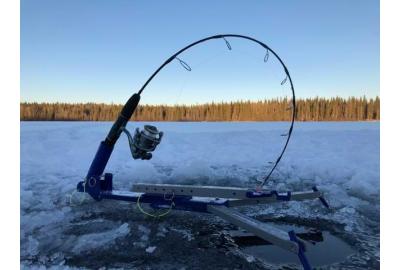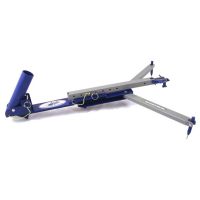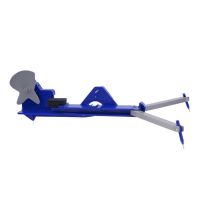I owe a lot of my catches in the last half dozen years to the JawJacker, a device that is designed to hold an ice fishing rod under tension, so when tripped by a fish bite, the rod springs up, effectively setting the hook. That’s it. But is it ever effective. To use a JawJacker, it is the complete system; a good rod, good line, a quality hook, and the JawJacker, that all work together to hook the fish. But besides that, the Jawjacker has a lot of other hidden qualities. For one, it’s quiet, not spooking fish. Two, it continues to fish non-stop, regardless of weather. And three, it is infinitely patient, so when that fish finally decides to bite, it sets the hook, each and every time. And because the hook is set on every bite, more fish are caught.
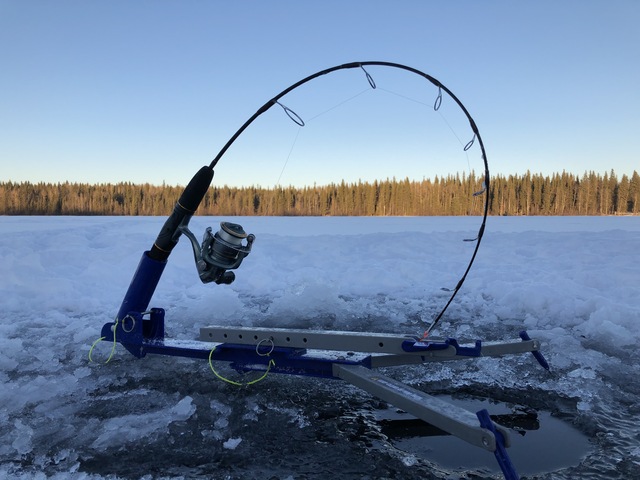
A JawJacker rig; loaded and at the ready.
Running JawJackers as long as I have, I’ve come to know what gear works best, and for my money, a longer rod, so that there is a greater loading up of tension, means more hooked fish. I also know that I can’t work with 4 pound test, as the line can and has broken on me under the stress of hard, snapping hooksets, so I run 6 lb test for trout and walleye, and most times I rely on bait to bring the fish in and bite. My favourite hook for trout is a single, size 4 Gamakatsu octopus hook, to which I lightly attach about a three quarter inch lively chunk of dew worm. My favourite hook for walleye is a high quality treble, and depending on the size of minnow I’m putting down, a size 6, or size 4 are my go to.
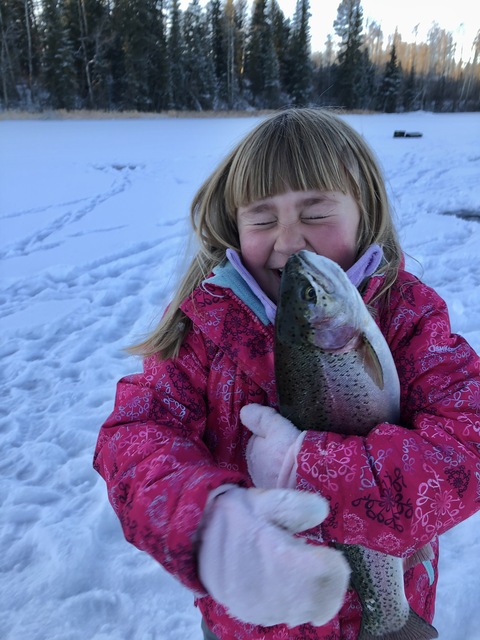
The happy outcome of a Cedar fishing for trout using a JawJacker.
For pike, I run braid, typically 20 pound with a steel leader attached. Because I run bigger baits for pike, I also move my treble hook size up, and normally run a size 2, 1, or 1/0. The advice I can give about hooks, regardless of whether it’s for pike or trout, is to get really high quality ones. Do this and that pointy end that will attach you to your fish more often.
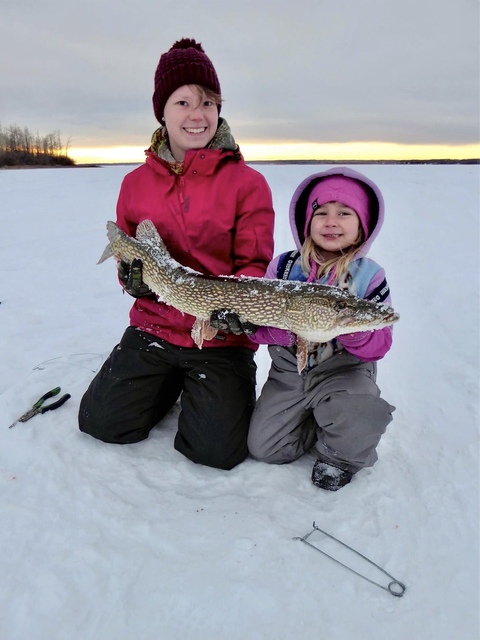
Stick a medium heavy rod on a JawJacker and you are set for pike.
Regardless of whether I’m chasing pike, trout, or walleye, my ice rods are longer. Most are 28 to 38 inches long, and they have backbone. This helps assure good hook sets. Don’t get flimsy whippy rods. All they do is go off, tickle the fish because the point of the hook does not penetrate into the fish’s mouth, and then the fish gets away. Few things are more frustrating when ice fishing. But a good rod will deliver a strong hookset, quality line will transfer the power of the rod, into the point of the hook, and the high quality point of that hook will penetrate the fishes mouth, so when you see your JawJacker tripped, all you need to do is walk over, pick up the rod and reel the fish in. It’s a great deal.

